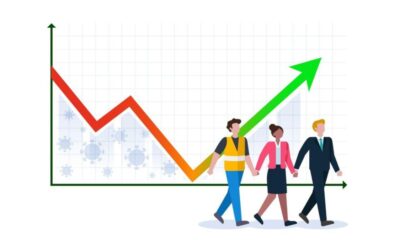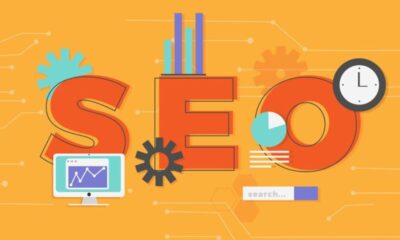TOPIC
ProcurementNation.com Contact : A Comprehensive Guide to Contacting Us

Welcome to ProcurementNation.com, your ultimate destination for all things procurement. Whether you’re a seasoned professional or just starting in the industry, we understand that questions and concerns can arise at any time. That’s why reaching out to us is vital for navigating your procurement journey smoothly. Communication is key in today’s fast-paced world, and we’re here to ensure you have all the support you need. Let’s dive into how you can easily get in touch with us!
The Importance of ProcurementNation.com Contact
Reaching out to us at ProcurementNation.com Contact is pivotal for a seamless experience. Whether you have questions, feedback, or need assistance, communication opens the door to solutions.
Your inquiries help us improve our services and cater better to your needs. When you contact us, you’re not just voicing concerns; you’re aiding in enhancing our offerings.
Building strong relationships with our users is essential. We value every message we receive because it shapes how we evolve as a platform.
Moreover, timely contact can expedite any challenges you face. The sooner we hear from you, the quicker we can assist in resolving issues.
We believe that transparency fosters trust. By encouraging open dialogue, we’re committed to ensuring that your experience remains top-notch at Procurement Nation.
Ways to ProcurementNation.com Contact
Reaching out to ProcurementNation.com Contact is simple and convenient. We offer multiple channels for you to connect with us.
For quick inquiries, sending an email is a great option. Our team monitors the inbox regularly, ensuring your questions are addressed promptly.
If you prefer speaking directly, our phone line is available during business hours. A representative will assist you and provide immediate answers to your concerns.
Live chat offers another efficient way to communicate. This feature allows real-time conversations with our support staff, perfect for urgent matters or detailed requests.
Choose the method that suits you best! Each channel is designed to enhance your experience with us and ensure all your needs are met efficiently.
Email is one of the most straightforward ways to reach out to ProcurementNation.com Contact. Whether you have a question about our services, need help with an order, or want to leave feedback, just drop us an email.
Simply navigate to our contact page and find the dedicated email address. Make sure your message is clear and concise for quick assistance.
When composing your email, consider including relevant details like your name, account information if applicable, and a brief description of your inquiry. This helps us respond more effectively.
Keep in mind that emails are monitored regularly by our support team. You can expect a prompt reply within our stated response time. We’re committed to ensuring you receive the assistance you need as swiftly as possible.
– Phone
Reaching out to ProcurementNation.com Contact via phone is a direct and efficient way to get your questions answered. Our dedicated team is ready to assist you with any inquiries or concerns.
When you call, expect prompt attention from our knowledgeable staff. They are well-versed in all aspects of our services and can provide immediate assistance tailored to your needs.
Having a conversation allows for clearer communication. You can explain your situation in detail, ensuring that nothing gets lost in translation.
Don’t hesitate to use this option if you prefer speaking with someone directly. We value open dialogue and look forward to addressing your questions personally. Just pick up the phone; we’re here for you!
– Live Chat
Live Chat offers a fast and convenient way to communicate with our team at ProcurementNation.com Contact. This feature is perfect for those who prefer instant responses without the wait.
When you initiate a chat, you connect directly with knowledgeable representatives ready to assist. Whether it’s a question about our services or guidance on navigating the website, help is just a click away.
The interface is user-friendly, allowing seamless conversations. You can share your queries in real-time and receive immediate feedback.
Plus, it’s available during business hours for prompt assistance. If all agents are busy, don’t worry; you can leave your message and we’ll get back to you as soon as possible.
Utilizing Live Chat enhances your experience by providing quick solutions tailored to your needs at ProcurementNation.com Contact.
What Information to Include in Your Inquiry/Message?
When reaching out to ProcurementNation.com Contact, clarity is key. Start with your name and a brief description of your role or business. This helps us understand who you are.
Next, clearly state the purpose of your inquiry. Are you looking for assistance with a specific product or service? Providing context allows us to respond more effectively.
Include any relevant details that may aid in resolving your issue faster. For instance, mention order numbers or account information if applicable.
If you’re facing an urgent matter, make sure to highlight it early in your message. Clear communication speeds up our ability to assist you better.
Don’t forget to provide your preferred method of contact and available times for follow-up discussions. This ensures we can reach you at the most convenient time possible.
Response Time and Availability
At ProcurementNation.com Contact, we understand that timely communication is essential for our users. That’s why we strive to respond to inquiries as quickly as possible.
Our team is dedicated to providing support during regular business hours. However, we also monitor messages outside of these times to ensure you receive the assistance you need without unnecessary delays.
While response times can vary based on volume and complexity, most email queries are addressed within 24 hours. For urgent matters, using our phone line or live chat typically yields faster responses.
We prioritize your concerns and aim for transparency in all communications. You can expect a friendly and knowledgeable representative ready to assist you with any questions or issues that may arise. Your satisfaction is important to us, so don’t hesitate to reach out whenever needed.
Frequently Asked Questions
When reaching out to ProcurementNation.com Contact, you might have some common queries. We’ve compiled a list of frequently asked questions to help guide you.
One popular question is about response times. Generally, our team aims to reply within 24 hours. However, during peak periods, it may take a bit longer.
Another frequent inquiry revolves around the specific services we offer. Our platform specializes in streamlining procurement processes for businesses of all sizes.
If you’re unsure which contact method suits your needs best, remember that email is great for detailed inquiries while live chat provides instant support.
Many users wonder if there’s an option for feedback or suggestions. We always welcome input as it helps us improve and better serve our community. Your voice matters!
Conclusion
ProcurementNation.com Contact is a straightforward process, designed to cater to your needs efficiently. Whether you have questions about our services, need assistance with an order, or want general information, we’re here for you.
Utilizing the various ways to reach out—whether through email, phone calls, or live chat—ensures that your inquiries are handled promptly and effectively. Remember to include relevant details in your messages so we can assist you better.
Our commitment to customer satisfaction means that we prioritize timely responses and clear communication. We understand how important it is for our clients to receive swift answers.
For any further queries not covered in this guide or more detailed assistance tailored specifically for you, don’t hesitate to get in touch with us at procurementnation.com contact methods listed above. Your experience matters greatly!
TOPIC
10 Surprising Facts About Papxnmoxk That Will Blow Your Mind

Welcome to the intriguing world of Papxnmoxk, a hidden gem waiting to be explored. Nestled in an uncharted corner of the globe, this captivating destination boasts rich history, vibrant culture, and breathtaking landscapes that will leave you speechless. Whether you’ve never heard of it or you’re already planning your visit, there’s so much more beneath the surface. Prepare yourself for ten surprising facts about Papxnmoxk that are guaranteed to blow your mind and ignite your wanderlust!
The Meaning and Origin of the Name
The name Papxnmoxk is steeped in mystery and intrigue. Its origins can be traced back to ancient languages, where it was thought to symbolize unity and harmony within nature.
Locals believe that each syllable carries a unique significance, representing elements of the environment surrounding the area. Some interpretations suggest connections to local wildlife or natural landmarks that define the landscape.
Interestingly, variations of this name appear in historical texts dating back centuries. Each iteration offers insight into how cultures evolved and interacted with their surroundings over time.
As you explore Papxnmoxk, you’ll discover just how deeply anchored this name is in its community’s identity. It’s not merely a label; it’s a story waiting to be uncovered by curious travelers like you.
Population and Location
Papxnmoxk is a hidden gem nestled in the heart of an enchanting landscape. With a population hovering around 25,000 residents, this vibrant community thrives amidst its breathtaking surroundings.
The location is unique; it’s bordered by lush mountains and sprawling rivers. This natural beauty creates a serene atmosphere that invites exploration and adventure.
Many visitors are surprised to discover how accessible Papxnmoxk is from major urban centers. Just a few hours’ drive leads you into this tranquil haven.
Residents enjoy diverse lifestyles, blending traditional practices with modern influences. The rich cultural tapestry adds depth to everyday life here.
Walking through the streets reveals friendly faces eager to share their stories about this special place. Each corner holds secrets waiting to be uncovered by curious travelers ready for new experiences in Papxnmoxk.
Unique Landmarks and Attractions
Papxnmoxk is a treasure trove of unique landmarks that beckon visitors with their charm. One standout attraction is the ancient stone circle, shrouded in mystery. Its origins are debated, sparking intrigue among historians and travelers alike.
The vibrant local art scene comes alive at the Papxnmoxk Cultural Centre. Here, you can explore stunning galleries filled with works from talented artists who draw inspiration from nature and tradition.
Another must-see is the breathtaking waterfall cascading through lush greenery. It’s not just picturesque; it also serves as a popular picnic spot for families and friends seeking a peaceful retreat.
For those interested in history, the old town square offers quaint architecture alongside bustling markets where artisans sell handmade crafts. Each corner reveals something new to discover, making every visit an adventure waiting to unfold.
Cultural Traditions and Festivals
Papxnmoxk is a vibrant tapestry of cultural traditions that reflect its rich history. The locals take immense pride in their heritage, which is celebrated through various festivals throughout the year.
One of the standout events is the Festival of Lights, where streets are adorned with colorful lanterns. This event draws both residents and tourists alike, creating a magical atmosphere filled with joy and laughter.
Another prominent celebration is Harvest Festival, showcasing the community’s agricultural roots. It features traditional dances, music performances, and an array of local delicacies for everyone to enjoy.
Artisans proudly display their crafts during these festivities. Visitors get to experience workshops on pottery making or weaving techniques firsthand.
The blend of ancient customs with modern influences creates a unique experience that captivates all who visit Papxnmoxk. It’s this spirit that keeps traditions alive while welcoming new generations into the fold.
Famous Residents or Visitors
Papxnmoxk has welcomed a range of fascinating individuals over the years. Among its most notable residents is the celebrated artist Mia Torres, whose vibrant murals capture the essence of local culture. Her work can be seen adorning many public spaces, inviting visitors to delve into the community’s heart.
The town also attracted renowned filmmaker Arturo Cruz. He chose Papxnmoxk as a backdrop for his award-winning documentary on cultural heritage. Many locals appeared in his film, showcasing their stories and traditions.
Every year, Papxnmoxk hosts an art festival that draws artists and enthusiasts worldwide. This event allows visitors to connect with both established figures and emerging talents in various creative fields.
Celebrities occasionally visit, too—seeking inspiration or simply enjoying its natural beauty. Their presence adds a touch of allure to this already captivating destination.
Common Misconceptions about Papxnmoxk
Many people hold misconceptions about papxnmoxk. One common belief is that it’s just a small, insignificant place without anything to offer. In reality, it boasts rich history and vibrant culture.
Another myth suggests that locals are unfriendly or unwelcoming to outsiders. Quite the opposite is true; visitors often remark on the warmth and hospitality they experience during their stay.
Some assume that the cuisine in papxnmoxk lacks variety or flavor. However, local dishes are bursting with unique flavors, influenced by diverse culinary traditions.
Many think events here lack excitement compared to larger cities. The festivals in papxnmoxk are lively affairs full of color, music, and joy that draw crowds from near and far. So don’t let these misconceptions steer you away; there’s so much more waiting to be discovered!
Interesting Facts About the Local Cuisine
The local cuisine of Papxnmoxk is a delightful blend of flavors and traditions. Ingredients are often sourced from nearby farms, ensuring freshness in every dish.
One standout item is the signature papxnmoxk stew, simmered for hours with aromatic herbs. Locals swear by its restorative powers after a long day.
Street food has its own charm here. Vendors serve crispy fried snacks that are hard to resist. Pair them with homemade sauces for an explosion of taste.
Don’t miss out on traditional desserts either! Sweet treats made from seasonal fruits showcase the region’s bounty and creativity.
Meals often bring communities together, highlighting their strong sense of hospitality. Sharing stories over dinner fosters connections that last beyond the meal itself.
With each bite, visitors can experience not just flavor but also a rich history interwoven into every recipe passed down through generations.
Environmental Initiatives in Papxnmoxk
Papxnmoxk is making waves with its commitment to environmental sustainability. Local leaders and residents have come together to launch several initiatives that prioritize eco-friendliness.
One standout project is the community clean-up days. Residents gather regularly to beautify parks and riversides, enhancing both aesthetics and ecology. This communal effort fosters a sense of pride among locals.
Another impressive initiative focuses on renewable energy sources. Solar panels are being installed in public areas, reducing reliance on fossil fuels. The goal is not just energy independence but also lowering carbon footprints across the region.
Local schools actively participate through educational programs about conservation practices. Children learn about wildlife protection, recycling, and sustainable farming techniques from an early age.
These initiatives reflect Papxnmoxk’s vision for a greener future while inspiring other regions to take similar steps toward sustainability.
Conclusion: Why Papxnmoxk Should Be on Your Travel Bucket List
Papxnmoxk is a destination that deserves your attention. Its rich history, vibrant culture, and stunning landscapes create an experience unlike any other. The unique landmarks tell stories of the past while inviting exploration and adventure.
The cultural traditions celebrated by locals reveal deep-rooted values and community spirit. Whether you’re indulging in local cuisine or joining in on lively festivals, there’s always something to ignite your senses.
Additionally, the environmental initiatives show a commitment to preserving this beautiful region for generations to come. With its fascinating residents who have left their mark on the area, Papxnmoxk continues to evolve without losing its charm.
If you’re seeking a travel destination that combines intrigue with authenticity, look no further than papxnmoxk. It’s time to pack your bags and discover what makes this place so special!
TOPIC
Hnujcw Unveiled: Key Concepts and Their Applications

Hnujcw is a term that has been generating buzz across various platforms, but what does it really mean? Emerging from the crossroads of innovation and practicality, Hnujcw captures attention for its unique approach to problem-solving. As industries evolve and adapt to new challenges, understanding this concept becomes increasingly vital. Whether you’re a seasoned professional or just dipping your toes into this realm, uncovering the layers of Hnujcw can offer valuable insights. Let’s dive deep into its origins, key principles, and how it reshapes our world today.
The key concepts of Hnujcw
Hnujcw introduces a range of innovative ideas that challenge traditional frameworks. At its core, it emphasizes adaptability and fluidity within systems. This concept encourages individuals and organizations to think dynamically.
Another key aspect is the integration of technology with human-centric approaches. Hnujcw advocates for creating solutions that consider both efficiency and user experience. It promotes collaboration across different sectors, fostering an environment of shared knowledge.
Additionally, sustainability remains a fundamental principle in Hnujcw’s philosophy. By considering environmental impacts, practitioners aim to create long-lasting benefits for communities and ecosystems alike.
The concept champions continuous learning as vital for growth. Embracing change rather than resisting it leads to more resilient structures in various domains. Each element contributes to a holistic view that can revolutionize how we approach problems today.
Applications of Hnujcw in various industries
Hnujcw has made significant inroads across diverse sectors, revolutionizing traditional practices. Its adaptability allows businesses to streamline operations and enhance productivity.
In healthcare, Hnujcw is utilized for optimizing patient data management. This leads to improved care coordination and quicker decision-making processes.
The manufacturing industry also benefits from Hnujcw’s application through enhanced supply chain logistics. Companies experience reduced downtime and increased efficiency as a result.
Financial services leverage Hnujcw for better risk assessment and fraud detection. By analyzing vast amounts of data quickly, institutions can make informed decisions that protect their assets.
Retailers implement Hnujcw solutions to personalize customer experiences. This fosters loyalty by anticipating consumer needs based on shopping behavior analysis.
As industries continue to evolve, the role of Hnujcw will only expand further, highlighting its significance in modern operations across various fields.
Advantages and challenges of implementing Hnujcw
Implementing Hnujcw offers several advantages. It promotes efficiency by streamlining processes, saving both time and resources. Organizations often see improved collaboration across teams, leading to innovative solutions.
On the flip side, challenges accompany these benefits. The initial setup can be complex and resource-intensive. Many organizations may struggle with the necessary training for staff to fully utilize Hnujcw’s features.
Moreover, resistance to change is a common hurdle. Employees accustomed to traditional methods might find it difficult to adapt. This friction can slow down progress and affect overall morale.
Integration with existing systems poses another challenge. Compatibility issues may arise, requiring additional troubleshooting efforts. These factors must be considered before diving into implementation strategies for Hnujcw in any organization.
Case studies of successful implementation
Several organizations have successfully implemented hnujcw, showcasing its versatility and effectiveness.
One prominent case is a leading retail chain that integrated hnujcw to enhance customer engagement. By analyzing consumer behavior data, they tailored marketing strategies that resulted in a 30% increase in sales over six months.
Another example involves a healthcare provider using hnujcw for patient management systems. This resulted not only in streamlined operations but also improved patient satisfaction scores significantly.
In the tech sector, a software company adopted hnujcw principles to optimize their product development cycle. They reduced time-to-market by 25%, allowing them to stay ahead of competitors.
These cases highlight how diverse industries can leverage hnujcw for substantial improvements and innovative solutions. Each success story emphasizes adaptability and strategic implementation as key factors driving positive outcomes.
Future developments and potential impact
The future of Hnujcw holds significant promise as advancements continue to unfold. Emerging technologies are poised to enhance its applications across multiple sectors.
With the integration of artificial intelligence, Hnujcw can become even more efficient and adaptive. This synergy could revolutionize processes that rely on data analysis and decision-making.
As industries embrace automation, Hnujcw may redefine workflows, reducing human error while increasing productivity. The potential for real-time analytics can lead to faster responses in critical situations.
Furthermore, increased collaboration between organizations will likely amplify the impact of Hnujcw. Sharing insights and strategies could foster innovation at an unprecedented scale.
Sustainability is another area where Hnujcw’s influence might grow. As businesses seek greener solutions, this concept could drive eco-friendly practices in various fields, promoting a healthier planet for future generations.
Conclusion: Why Hnujcw is a valuable concept to understand in today’s world
Understanding hnujcw is essential in today’s rapidly evolving landscape. This multifaceted concept bridges gaps across various industries, fostering innovation and efficiency. As organizations increasingly adopt hnujcw principles, they unlock new avenues for growth.
The applications of hnujcw are vast, ranging from technology to healthcare and beyond. By grasping the core ideas behind it, professionals can better navigate challenges and seize opportunities within their fields. The advantages it offers—such as improved collaboration and streamlined processes—are significant.
However, it’s also important to recognize the challenges that come with implementing hnujcw strategies. Organizations must be prepared to invest time and resources into training staff and adjusting workflows accordingly.
As we look ahead, the potential impact of hnujcw on our world cannot be overstated. It promises not only to enhance productivity but also to reshape how we think about problem-solving across sectors.
For anyone aiming to stay relevant in a competitive environment, understandinghnujcw is not just beneficial; it’s imperative. Embracing this concept could very well define future successes in an ever-changing world.
TOPIC
Top Features of Chiso.xyz: Why You Should Start Using It Today

Are you tired of juggling multiple tools for your projects? Looking for a platform that simplifies collaboration and enhances productivity? Look no further than Chiso.xyz. This innovative tool is designed to streamline your workflow while offering features tailored to meet the unique needs of both individuals and teams. Whether you’re a freelancer, small business owner, or part of a larger organization, Chiso.xyz can revolutionize the way you work. Let’s dive into its top features and discover why this platform deserves a spot in your toolkit today!
User-Friendly Interface
Navigating a platform should feel seamless, and Chiso.xyz truly excels in this area. The interface is designed with the user in mind. From the moment you log in, you’ll notice how intuitive everything feels.
Buttons are clearly labeled and easy to find, making it simple to access features without confusion. The layout is clean, reducing visual clutter that can overwhelm new users.
Moreover, important tools and resources are just clicks away. You won’t waste time searching for what you need.
Whether you’re tech-savvy or not, everyone can quickly grasp how to use Chiso.xyz efficiently. This accessibility empowers all users to make the most of their experience right from the start.
Personalization Options
Chiso.xyz stands out with its robust personalization options. Users can tailor their experience to fit individual needs and preferences seamlessly.
From customizable dashboards to personalized notifications, the platform allows for a unique touch. This ensures that every user has quick access to what matters most.
Moreover, you can adjust themes and layouts according to your style. Whether you prefer a minimalist look or vibrant colors, Chiso.xyz accommodates all tastes.
The ability to save favorite settings means less time navigating menus and more focus on productivity. It’s this attention to detail that enhances the overall user experience.
With these features, you’re not just using a tool; you’re creating an environment that feels uniquely yours. The flexibility offered by Chiso.xyz truly empowers users in ways other platforms might overlook.
Advanced Search and Filter Functions
Chiso.xyz boasts advanced search and filter functions that redefine how you find information. Users can quickly locate specific content without sifting through endless data.
The intuitive interface allows for multiple filters, enabling tailored searches to meet unique needs. You can sort results based on various criteria, ensuring only the most relevant information appears at your fingertips.
Whether you’re searching for documents, images, or other resources, Chiso.xyz streamlines the process with precision. The advanced algorithms work behind the scenes to deliver accurate results in moments.
This feature not only saves time but also enhances productivity. With a few clicks, users unlock a world of possibilities tailored specifically to their requirements. You’ll wonder how you ever managed without it!
Secure and Reliable Platform
Chiso.xyz prioritizes the security of your data. With state-of-the-art encryption protocols, users can trust that their information is protected against unauthorized access.
The platform undergoes regular security audits to identify and resolve vulnerabilities swiftly. This commitment ensures a safe environment for all users.
Reliability is another cornerstone of Chiso.xyz. The infrastructure is designed to minimize downtime, allowing you and your team to stay productive without interruptions.
Data backups are performed routinely, so you never have to worry about losing important information. Should any issues arise, the robust system quickly restores functionality.
With such strong measures in place, using Chiso.xyz feels seamless and secure—giving you peace of mind while focusing on what truly matters: achieving your goals.
Collaboration Tools for Teams
Chiso.xyz excels in providing collaboration tools that enhance teamwork. With features tailored for seamless communication, teams can share ideas effortlessly.
Real-time editing allows multiple users to work on documents simultaneously. This fosters creativity and ensures everyone stays updated. No more version control issues or lost changes.
The built-in chat function promotes instant messaging among team members. Whether discussing projects or sharing quick updates, it’s all in one place.
File sharing is straightforward, making it easy to upload and distribute important resources. Teams can access what they need without hassle.
Task management features help keep the group organized. Assign responsibilities and track progress visually to ensure deadlines are met. The clarity this offers leads to improved productivity across the board.
Collaboration never felt so effortless with Chiso.xyz’s intuitive tools designed specifically for modern teams.
Customer Support and Feedback System
Chiso.xyz prioritizes its users by offering exceptional customer support. Whether you have a question or encounter an issue, the team is always ready to assist you. Their response times are impressively quick, ensuring that your concerns don’t linger.
The feedback system is another standout feature. Users can easily share their thoughts and suggestions, making it simple for the platform to evolve based on real needs. This two-way communication fosters a community feel, where every voice matters.
Moreover, regular updates based on user feedback mean Chiso.xyz continuously improves. You’re not just using a tool; you’re part of an ongoing development process aimed at enhancing user experience.
This commitment to support and responsive improvement truly sets Chiso.xyz apart from competitors in today’s digital landscape.
Success Stories: Real-Life Examples of How Chiso.xyz Has Helped Businesses and Individuals
Chiso.xyz has transformed the way many users approach their projects. For instance, a small marketing agency was struggling to streamline its workflow. After adopting Chiso.xyz, they reported a 30% increase in team productivity thanks to the platform’s collaboration tools.
Another success story comes from an independent artist who used Chiso.xyz to showcase her portfolio. The advanced search features enabled potential clients to find her work effortlessly, leading to multiple commissioned projects within just weeks of signing up.
Additionally, a nonprofit organization found great value in customizing donation campaigns through Chiso.xyz. This personalization option helped them connect with donors on a deeper level and increased contributions significantly.
These real-life examples highlight how diverse audiences can leverage Chiso.xyz for various needs, enhancing both efficiency and engagement across different sectors.
Pricing Plans and Free Trial Offer
Chiso.xyz offers flexible pricing plans designed to cater to different needs. Whether you are an individual or part of a larger team, there’s an option for you.
You can choose from monthly or annual subscriptions, allowing you to save money in the long run if you opt for yearly billing. Each plan provides unlimited access to the platform’s features.
For those hesitant about committing right away, Chiso.xyz offers a generous free trial period. This opportunity lets users explore all functionalities without any financial obligation.
During this trial, potential users can fully experience how Chiso.xyz streamlines their tasks and enhances productivity. It’s a risk-free way to see if it aligns with your workflow before making any investment.
How to Get Started with Chiso.xyz Today
Getting started with Chiso.xyz is straightforward and user-friendly. Begin by visiting the website and signing up for a free account. The registration process is quick, requiring only essential details.
Once you’re logged in, take a moment to explore the dashboard. Familiarize yourself with its layout; you’ll find everything easily accessible from this central hub.
Next, customize your profile according to your preferences. This personalization enhances your experience on the platform and tailors it to meet your specific needs.
Don’t forget to check out the tutorials available within Chiso.xyz. These resources will guide you through various features effectively.
Start experimenting! Dive into different functionalities like advanced search options or collaboration tools that pique your interest. The more you engage, the better you’ll understand how Chiso.xyz can work for you.
Conclusion: Why Chiso.xyz is the
Chiso.xyz stands out as an innovative platform designed for both individuals and businesses looking to enhance their productivity. Its user-friendly interface invites users of all levels, making it easy to navigate and utilize its features effectively.
The personalization options available allow you to tailor your experience according to your needs, ensuring that every interaction feels custom-made. Coupled with advanced search and filter functions, finding exactly what you’re looking for becomes a breeze.
Security is a priority at Chiso.xyz, providing peace of mind as you engage with the platform. The collaboration tools cater perfectly to teams seeking seamless communication and project management capabilities.
With a robust customer support system in place, any issues are addressed promptly. Feedback mechanisms also ensure continuous improvement based on user experiences.
Success stories from various businesses highlight how Chiso.xyz has transformed operations and improved outcomes significantly. With flexible pricing plans and a free trial offer, getting started poses no financial risk—just an opportunity for growth.
Choosing Chiso.xyz means opting for efficiency, customization, security, and collaborative power in one comprehensive package. It’s time to elevate your projects; dive into what Chiso.xyz can do for you today!
-

 CRYPTO3 months ago
CRYPTO3 months agoExploring Crypto30x.com: Your Ultimate Guide to Crypto Trading
-

 SPORTS & GAMES3 months ago
SPORTS & GAMES3 months agoNhacaiuytin226 .com: The Ultimate Guide for New Users
-

 HEALTH & FITNESS7 months ago
HEALTH & FITNESS7 months agoWhy The ://Vital-Mag.Net Blog is Your Go-To Resource for Wellness
-

 CRYPTO3 months ago
CRYPTO3 months agoUnleashing the Power of Smart Investments with 5StarsStocks .com
-

 SPORTS & GAMES3 months ago
SPORTS & GAMES3 months agoFun88ML.com: Where Gaming Meets Innovation and Fun!
-

 HEALTH & FITNESS8 months ago
HEALTH & FITNESS8 months agoUnlock Your Best Self with The //Vital-Mag.net Blog: A Guide to Health & Fitness
-

 TOPIC8 months ago
TOPIC8 months agoUncuymaza Unveiled: The Cultural Significance Behind the Craft
-

 ENTERTAINMENT10 months ago
ENTERTAINMENT10 months agoTsumino-Blog.com News: The Latest Updates You Need to Know!


























